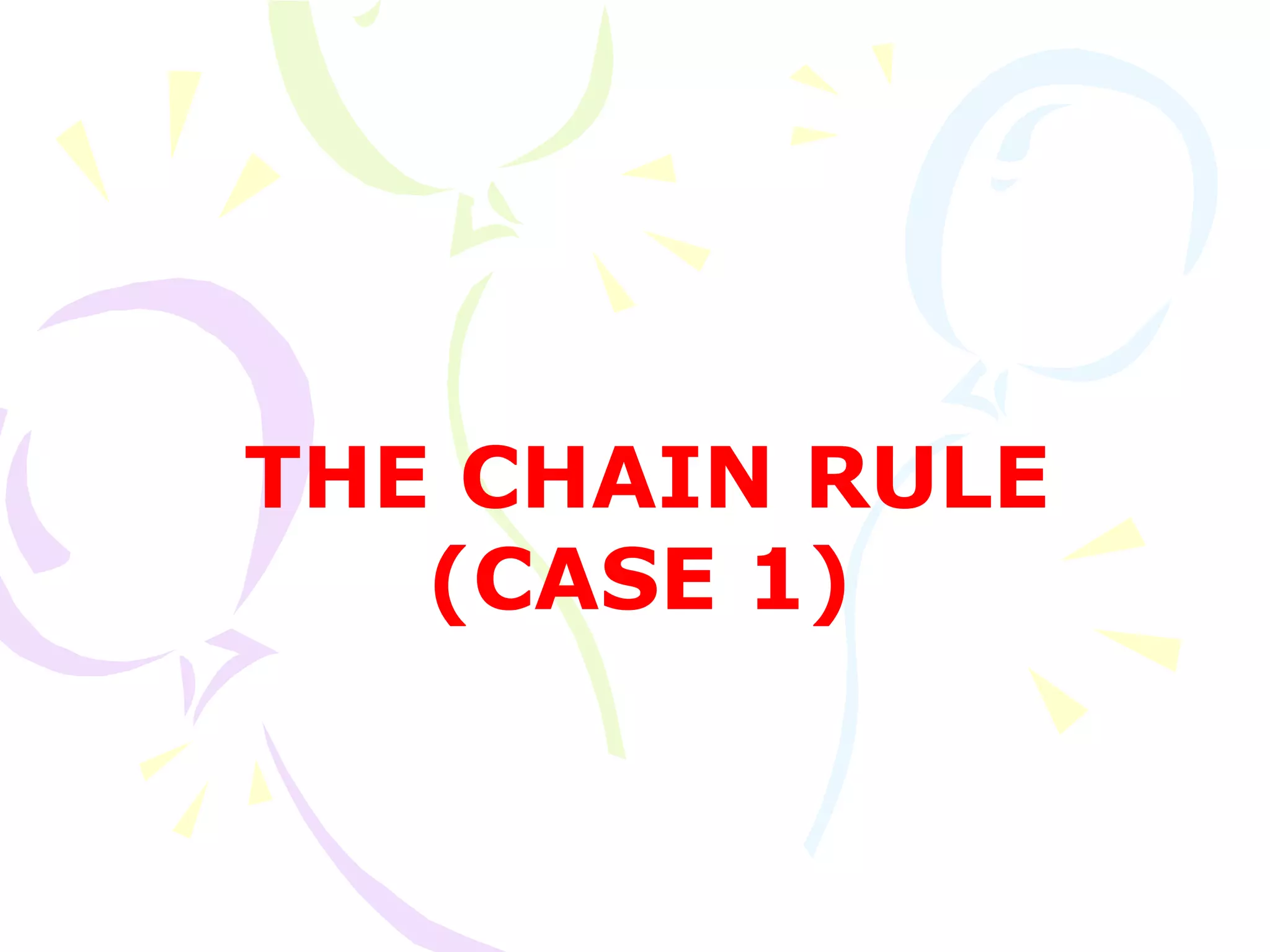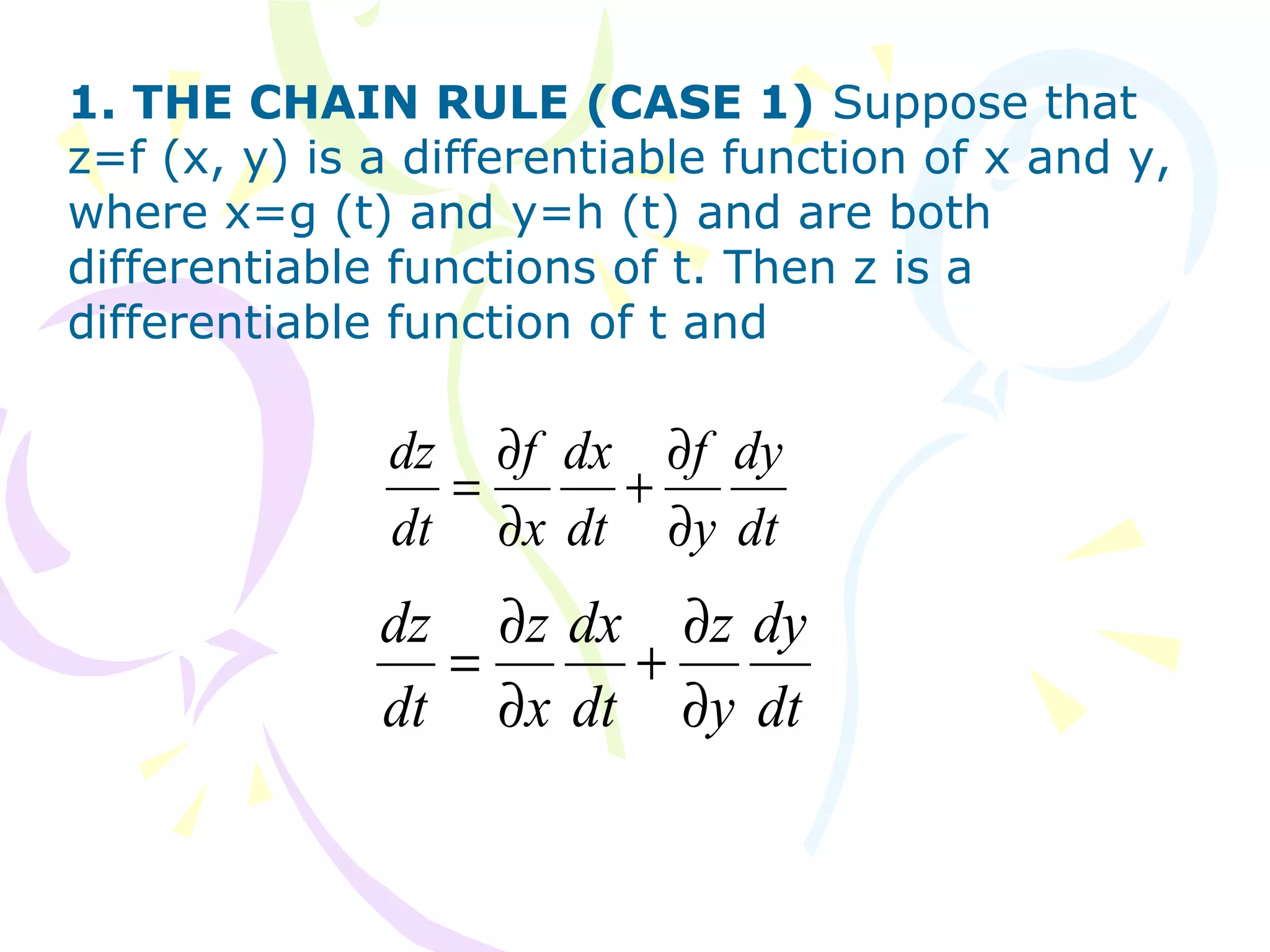1. The chain rule describes how to take the derivative of a function composed of other functions. It states that if z = f(x, y) and x and y are functions of t, then the derivative of z with respect to t is the sum of the partial derivatives multiplied by the derivatives of x and y with respect to t.
2. The chain rule is applied to find the derivative of two example functions, w = xy and w = xy + z, with respect to t along given paths for x, y, and z in terms of t.
3. The chain rule is generalized to the case of a function u of n variables, where each variable is a function of m other variables














![1. DEFINITION A function of two variables
has a local maximum at (a, b) if f (x, y) ≤ f
(a, b) when (x, y) is near (a, b). [This means
that
f (x, y) ≤ f (a, b) for all points (x, y) in some
disk with center (a, b).] The number f (a, b) is
called a local maximum value. If f (x, y) ≥ f
(a, b) when (x, y) is near (a, b), then f (a, b) is
a local minimum value.](https://image.slidesharecdn.com/chainrule-150401213611-conversion-gate01/75/Chain-rule-15-2048.jpg)



![3. SECOND DERIVATIVES TEST Suppose the
second partial derivatives of f are continuous
on a disk with center (a, b) , and suppose that
fx (a, b) and fy (a, b)=0 [that is, (a, b) is a critical
point of f]. Let
(a)If D>0 and fxx (a, b)>0 , then f (a, b) is a local
minimum.
(b)If D>0 and fxx (a, b)<0, then f (a, b) is a local
maximum.
(c) If D<0, then f (a, b) is not a local maximum
or minimum.
2
)],([),(),(),( bafbafbafbaDD xyyyxx −==](https://image.slidesharecdn.com/chainrule-150401213611-conversion-gate01/75/Chain-rule-19-2048.jpg)





